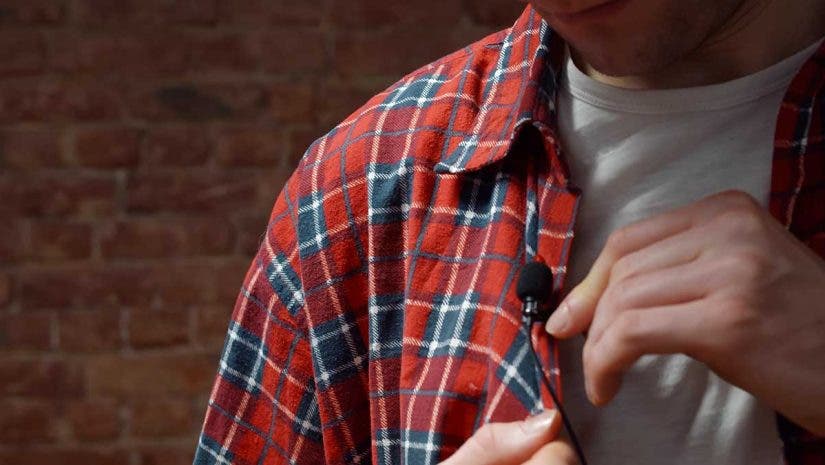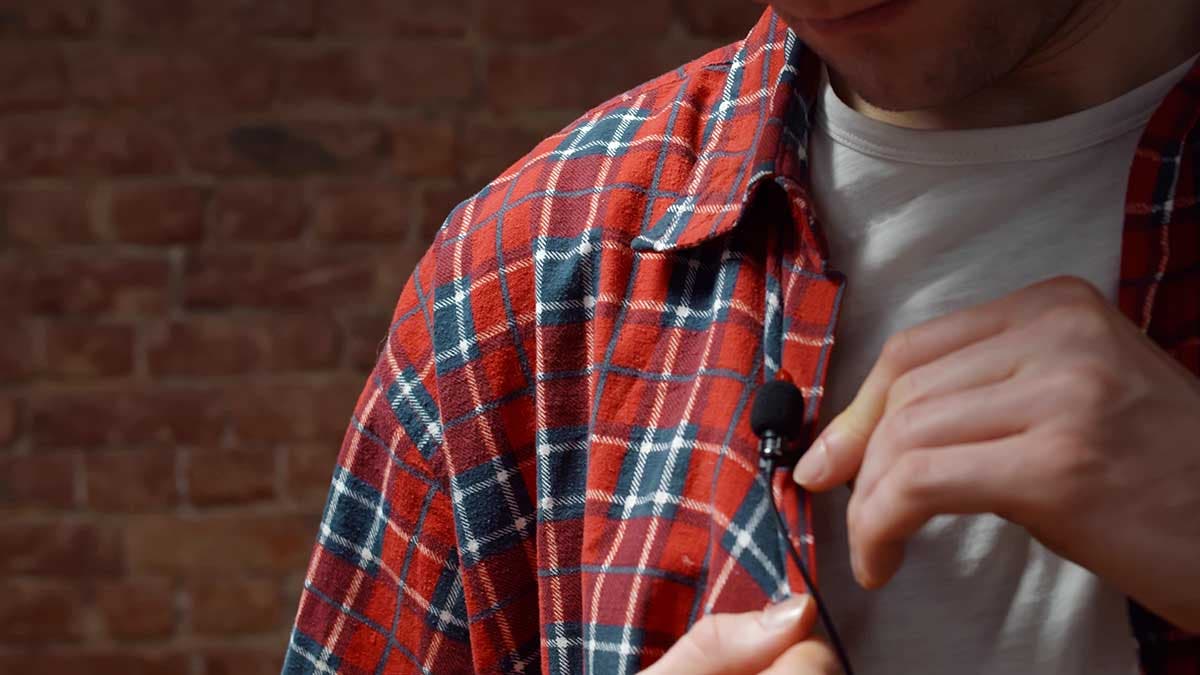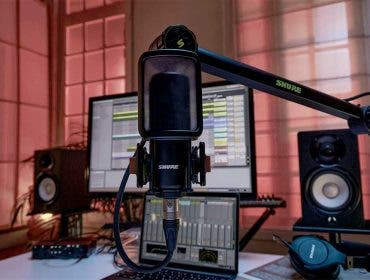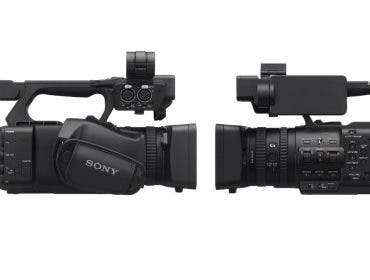You already know that, in videography, the sound is equally important to the image. Audio intelligibility, tone, and volume matter and dictate the success of your work. Therefore, relying on the camera’s built-in mic is fine for a beginner but not for a professional videographer. To step up your videography, you need an external microphone. And, if you prefer freedom of movement, vlogging from outside the studio, creating YouTube videos, or interviews, lavalier microphones are the best choice for you. Here is how to choose the one that fits you the most, as well as some of my favorite picks.
What Is a Lavalier Microphone?
A lavalier microphone is a small and discrete mic that attaches to a person’s body or clothing to record their voice. It allows full-body movement, which makes it ideal for film and television, scene performers, travel and street documentaries, vlogging, and so on.
Types of Lavalier Mics
Lavalier mics are designed for particular recording environments and produce different effects. Therefore, the first step in choosing a lavalier mic is to consider where and how you intend to use it. Think about the person who is going to wear it, the conditions in which they are going to wear it, how visible the mic should be, and what audio features you are after. Based on these characteristics, choose one of the following lavalier mic categories:
Proximity vs. Transparent Lavalier Microphones
Proximity lavaliers are ideal when you want to isolate a voice from the background noise. They are popular on radio and television but also for noisy events where you want to pick up a speaker or vocal’s voice as clearly as possible (e.g., recording a singer singing the national hymn in a stadium). Proximity lavaliers need to be very close to the speaker’s mouth, which usually means you see them attached to their ear or collar. If you vlog from an open space event and want to rule out the background noise, you may want a proximity Lavalier mic.
Transparent lavaliers have more reach than proximity lavaliers and produce a more natural sound. They pick up the main voice and some of the surrounding sounds. Instead of hearing just one nicely separated voice that feels like a studio recording, the listener hears a spectrum of sounds that feels like a live recording. Transparent lavalier mics are perfect for theater recordings. They can be placed around your video set to pick up environmental sounds. They are great for recording interviews and capturing the main voice in documentaries without blocking environmental sounds.
Omnidirectional vs Directional Lavalier Mics
An omnidirectional lavalier mic picks up sounds coming from any direction. They can be mounted anywhere on a person’s body or clothing without worrying about sound direction. This makes them a good choice for regular use in informal video recordings. Omnidirectional lavalier mics also pick up environmental sounds. If you travel to a busy city and want to record the buzz of the streets together with the voice, an omnidirectional lavalier is the best choice.
Directional lavalier mics pick up sounds coming from a single direction. They block out background sounds better than omnidirectional lavaliers, which makes them ideal for streaming from studio locations. However, you must mount them firmly, pointing directly towards the speaker’s mouth.

Wired vs. Wireless Lavalier Mics
Wired lavalier mics have a cable going from the mic to the camera or to a transmitter that wirelessly transmits the audio to a receiver. Wireless lavalier mics, on the other hand, have the mic built-in into the transmitter. This small design difference influences the way the person wears the lavalier and how much of it gets to be seen.
A wired lavalier is more discrete. The transmitter is mounted on the belt, and the cable is hidden underneath the person’s clothes. The only bit that’s visible is a small mic attached to the collar, and even that can be disguised. A wired mic is the way to go if you don’t want people to notice the speaker is wearing a mic (e.g., street vlogging, travel documentaries, etc.).
A wireless lavalier is more visible and needs firmer support because you have to attach a clip-on or magnetic transmitter box to the speaker. However, they are faster to deploy and more comfortable for the person who wears them. If you want to give the speaker total movement freedom, a wireless lavalier mic may be a better choice.
Most wireless lavalier transmitters both have an inbuilt mic and a line-in option so you can choose to use a small wired lavalier and hide the transmitter, or to use the built-in mic.
Top Lavalier Mics for Your Videography
Best for Live Streaming: Audio-Technica AT803
The AT803 is a proximity omnidirectional lavalier condenser mic, compatible with professional audio equipment, designed especially for broadcasting and video production. It’s tiny and discrete, comfortable to wear, and able to shield background noise and RF noise interference. Ideal for performers and public speakers, the AT803 provides exquisite voice quality. It is a wired lavalier mic, with a 6′ (1.8 m) cable permanently attached to it.
Best for Travel: DJI Mic Dual-Transmitter Wireless Microphone System/Recorder w/ Lavalier Mic
The DJI Mic 2 is a popular choice for travel thanks to its wireless reach of 250 meters. The Mic 2 comes with two transmitters, allowing you to record the audio of any fellow travelers you want to include in your video. The included lavalier mics are discrete and easily concealable if you record in a busy location. They have a long battery life and produce high-quality sound in any recording environment. The two included lavalier mics are Turnstile Audio TASL500 Lavalier Microphones. It comes with USB-C, Lightning, and 3.5mm TRS ports for compatibility with many different recording devices, like smartphones, cameras, and computers.
Best for Interviews: Rode Wireless GO II Compact Microphone System
Wireless GO II includes two wireless transmitters with built-in mics and one receiver. The receiver has a 3.5mm TRS output, which you can plug it into a camera, smartphone, or computer. You can also charge the transmitters and the receiver via a USB-C port. The transmitters are small, lightweight, and comfortable to wear. Your speakers will have complete movement freedom. The simple clip-on design ensures they are ready to record in seconds. Furthermore, you can mount the transmitters on a camera’s cold shoe, mobile camera rig, boom pole, and more.
Best for YouTube Videos in the Studio: Sennheiser XS Lav USB-C Lavalier Microphone
The XS Lav is a wired omnidirectional lavalier mic, ideal for recording environmental sounds. It has a 6.6′ (2 m) cable with a USB-C connector that powers the mic. Plug it into your smartphone or computer, and you are ready to record your YouTube tutorial. It eliminates noise and emphasizes your voice. The XS Lav features two-way communication for video meeting applications, which means you can extend its use and rely on it in any situation.
Best Economy Option: Godox LMD-40C
Godox LMD-40C offers two high-quality microphones connected to a single 3.5mm TRRS connector, which means you can record two speakers at the same time. It is omnidirectional and wired, with a generous 13.1′ (4 m) cable. The mic has a high signal-to-noise ratio (74dB), which helps you record high-quality audio even in noisy environments.
Conclusion
A Lavalier mic is an affordable accessory that instantly takes your videography to the next level. You don’t need to know much about microphones or spend a lot of time learning how to use a lavalier. You simply plug it in and attach the transmitter to the speaker. Lavalier microphones are so versatile and easy to use that you can spot one almost everywhere, from TV broadcasts to live streaming to on-scene shows to travel vlogs to YouTube tutorials. They weigh less than 50 grams and fit in any pocket, so don’t leave them at home when you film on location.






